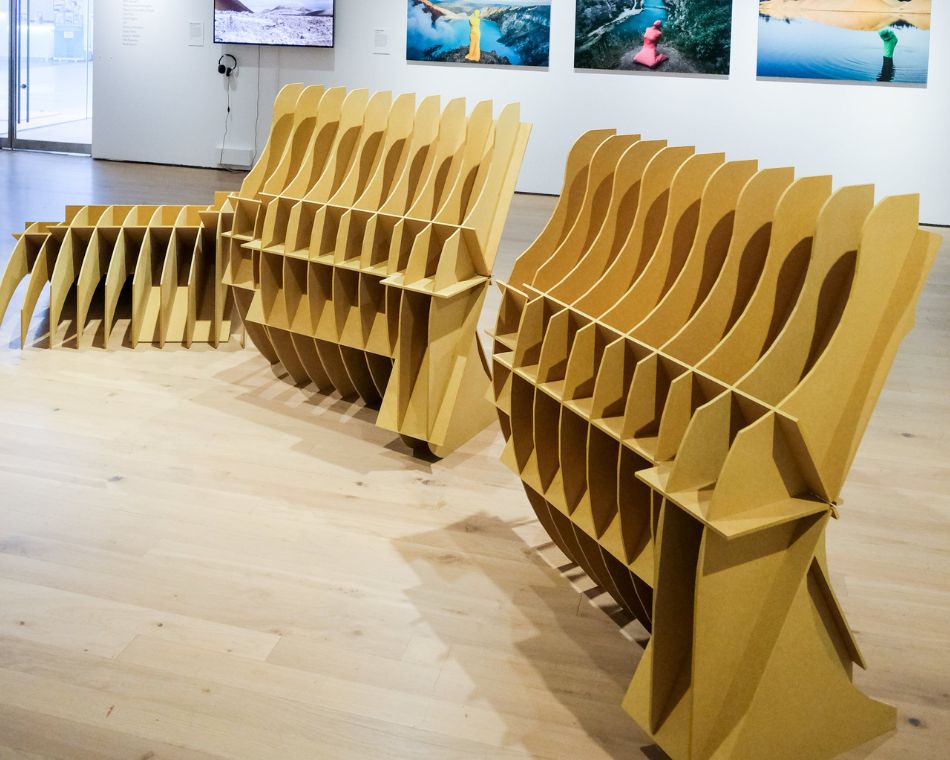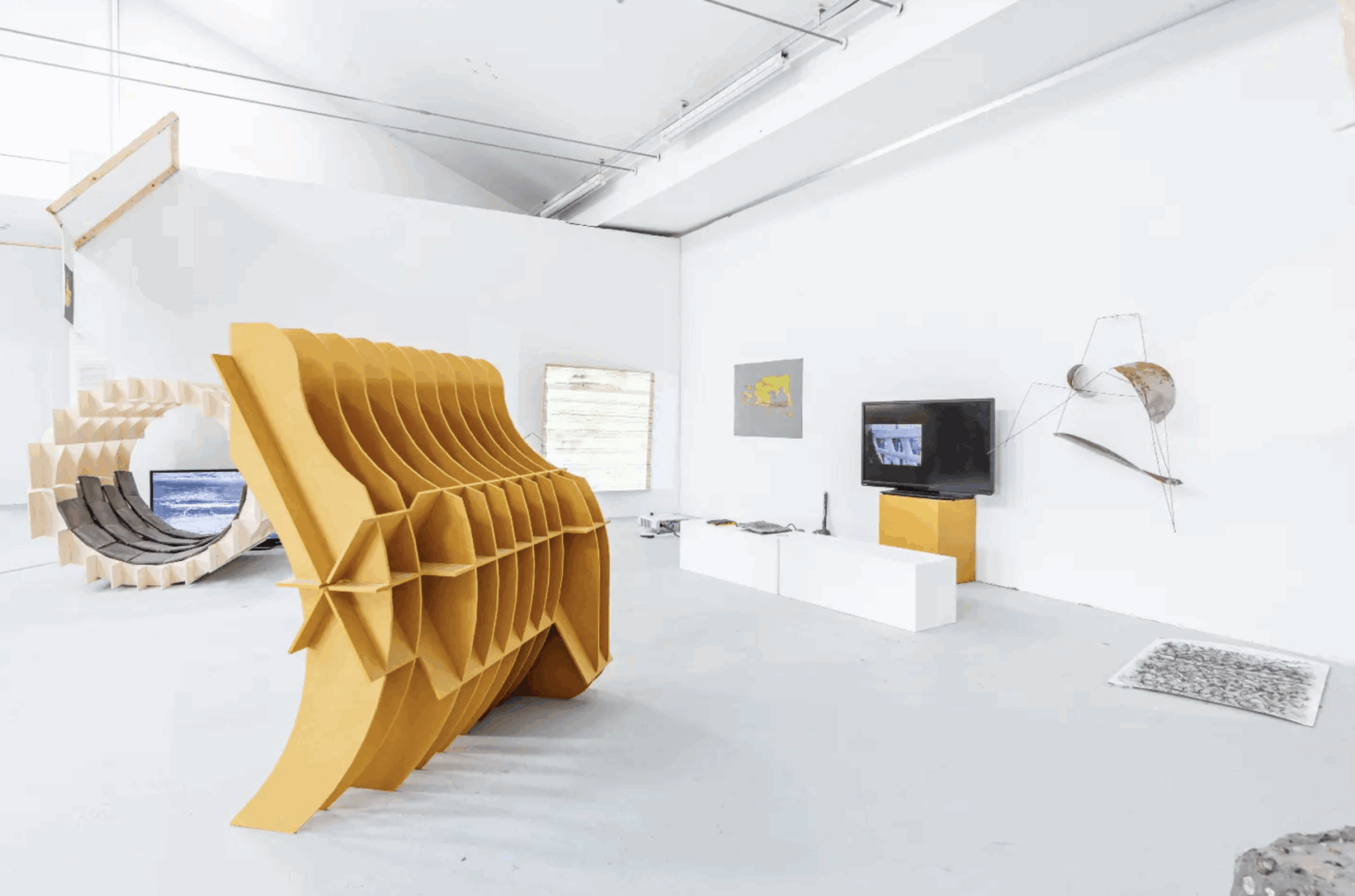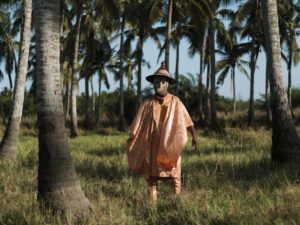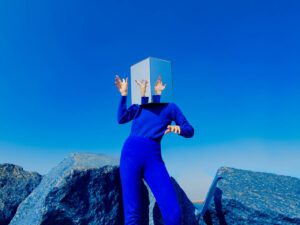Sam Metz is the winner of the 2025 Aesthetica Emerging Art Prize. Their work seeks to answer the question: what would the art world look like if it centred neurodivergent experiences? They make drawing, animation and sculptural installation that respond to neurodivergence and the body, often relating to stimming and ecology. The award-winning sculpture, Porosity, reflects Metz’s sensory experience of the Humber Estuary. Bright yellow structures echo how they see the water’s reflection through ocular albinism (a genetic condition that affects the eyes). The piece challenges conceptions of sculpture by integrating disability into its core form, embracing difference as method and message. Metz spoke to Aesthetica about spotlighting neurodivergent experiences and challenging conventional art spaces.
A: Can you describe the process of translating your visual perception, especially with ocular albinism, into sculptural form?
SM: In the work I shared for Aesthetica, I was exploring my experience of the Humber mudflats near the estuary where I live. There are often times when the light catches the surface of the water and stretches out towards the horizon, leaving a lingering yellow glow in my eyes, due to my condition. I wanted to capture that sensation — to translate it into the colour and surface of the sculpture itself. In other works, I’m interested in how shifts in light and colour can suggest movement or unsettle the boundaries of form. My piece Scopic Insufficiency — shown at Leeds Art Gallery and currently at Primary, Nottingham — continues this exploration. In it, I use light and colour to both accentuate and disrupt the work’s undulating surfaces, creating moments where the form seems to shift or slip from focus.
A: How do you envision people interacting with your sculptures, especially those unfamiliar with neurodivergent experiences?
SM: In Porosity, audiences are invited to move around the sculpture and think about movement through time and space. Working with modular forms, I’m interested in how the body navigates space — almost like a kind of choreography. Repetition within the form echoes patterns of physical rhythm and gesture; while this can allude to neurodivergent experience through tics and stimming, I don’t think this overt in this particular work. It is more evident in other works I have made, such as the sculpture Torsion.
A: You describe disability and chronic pain as central to your sculptural practice. How do you make these experiences visible or tangible through your work?
SM: Disability and chronic pain are central to my sculptural practice, shaping both how I make and think about form. In Porosity, decisions around height and placement directly respond to the realities of the disabled and chronically ill body. Much of my work sits low, around 1.2 metres high, intentionally resisting the monumentality often associated with sculpture. I’m interested in challenging the moral symbolism of the upright — with its associations of being forthright and upstanding — and instead creating work that is designed for the seated body. As someone living with Ehlers-Danlos Syndrome (a connective tissue disorder that causes my joints to dislocate easily), I often need to sit, stretch and move carefully to sustain my body. This physical negotiation finds its way into the work: the forms often appear to stretch or reach through space, echoing the movements I make to inhabit the world comfortably. While spending time by the estuary, I became aware of how these gestures of balance and extension allowed me to explore without injury — and those same gestures now shape the language of my sculpture.

A: How does Porosity challenge traditional expectations of sculpture and gallery space?
SM: In my journey making sculptural work, I have really struggled to find accessible fabrication and to learn more about accessible set ups for makers. Being mentored by the amazing disabled sculptor Tony Heaton when I was doing my DYCP and before that listening to him talk about his practice and approach, gave me the confidence I needed to start scaling up my work. I think it’s unusual for disabled artists to make larger scale sculptural work, so I hope I’m starting to sit amongst that change and to follow other disabled artists.
A: What’s next for you? Are you working on anything we can look forward to?
SM: I currently have a commissioned sculptural installation stepping on Timber on show at Museum of Contemporary Art, Tokyo as part of their 30 year celebrations, which was supported by curator Kyongfa Che. I have also created some sensory sculpture with young LGBTQ+ people for Tate St Ives and I’m looking forward to sharing the outcomes of the project with them next week. I have created some sensory boxes for a project by Gill Crawshaw and her research into the artist Audrey Barker. I am looking forward to sharing cilliated sense, for the upcoming show Beyond the Visual at Henry Moore Institute.
The Aesthetica Art Prize Exhibition 2025 is at York Art Gallery until 25 January.
sammetz.com | yorkartgallery.org.uk
Find out more about the Aesthetica Art Prize 2025 Shortlist here.
Words: Emma Jacob & Sam Metz.
Image Credits:
All images courtesy of Sam Metz.





